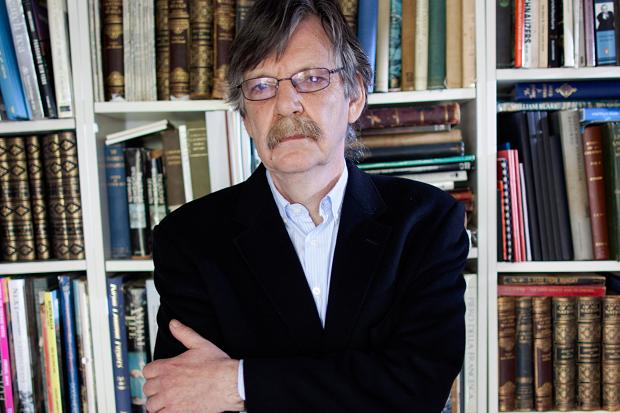
John Stezaker is a London-based conceptual artist who draws inspiration from Synthetic Cubism and Dadaist collage. His witty and surreal images are crafted out of found objects, such as publicity photographs, film stills, and postcards. He studied at the Slade School of Fine Art in the late 1960s and early 1970s, and was inspired by Guy Debord’s Society of the Spectacle (first published in English is 1970).
Stezaker has taught at Central Saint Martin’s School of Art, Goldsmiths College, and the Royal College of Art. He was awarded the Deutsche Börse Photography Prize in 2012. His work is held in museums and public collections, including The Museum of Modern Art, the Saatchi Collection, and the Rubell Family Collection. His most recent series “Shadows” is on view at Petzel Gallery through November 8.
When did you know you wanted to be an artist?
I am told that the moment I put a wax crayon to paper, drawing became my major preoccupation as a child. Strangely, even though this continued, uninterrupted, throughout my youth, it didn’t occur to me to pursue this obsession professionally. Family and school had persuaded me to pursue my art interests in my spare time, and it was only after getting a university place to study science that I made a last-minute application to art school.
John Stezaker, Shadow 3 (2014)
Silkscreen, 57.48 x 73.03 in.
Photo of courtesy the artist and Petzel Gallery.
What inspires you?
I imagine this is a difficult question for most artists, but what inspires me is primarily the material from which my work is made. Nothing gets me working as urgently as a new stash of found images and, most of all, a new source of images. Travel is often a real inspiration in these terms because it can introduce whole new worlds of images. However, in general, I am of a sedentary inclination.
John Stezaker, Shadow 5 (2014)
Screenprint, 57.48 x 66.93 in.
Photo courtesy of the artist and Petzel Gallery.
If you could own any work of modern or contemporary art, what would it be?
A Pablo Picasso portrait of a woman from the 1940s. At this time, Picasso uncharacteristically spent a lot of time in cinemas, as many did during the war period. His portraits of this period combine my own fascination with ’40s cinema and what I consider to be the high point in Picasso’s career. The ’40s portraits remain an endless source of inspiration for my “Marriage” series.
John Stezaker, Shadow 9 (2014)
Silkscreen diptych
Photo courtesy of the artist and Petzel Gallery.
What are you working on at the moment?
I am trying to confront the challenge of creating unbounded, infinite collage experiences. Most of the time I find myself trying to redeem the singularity of the image from the context of consumer culture multiplicity. But, just occasionally I seem to be attracted to multiplicity itself, and this is one of those moments. For the last couple of years, I have been making films in this spirit, which are infinite in the sense that they are looped and physically endless, but are also different every time they are experienced. I have also been experimenting with the idea of wallpaper, pursuing a more spatial experience of the infinite.
When not making art, what do you like to do?
I can’t say I enjoy doing anything quite as much as working. I tend to keep social activity to a minimum. I enjoy going to the cinema with my son. He has got me engaged with contemporary cinema. Otherwise, I enjoy walking on Hampstead Heath with my wife and our dog.